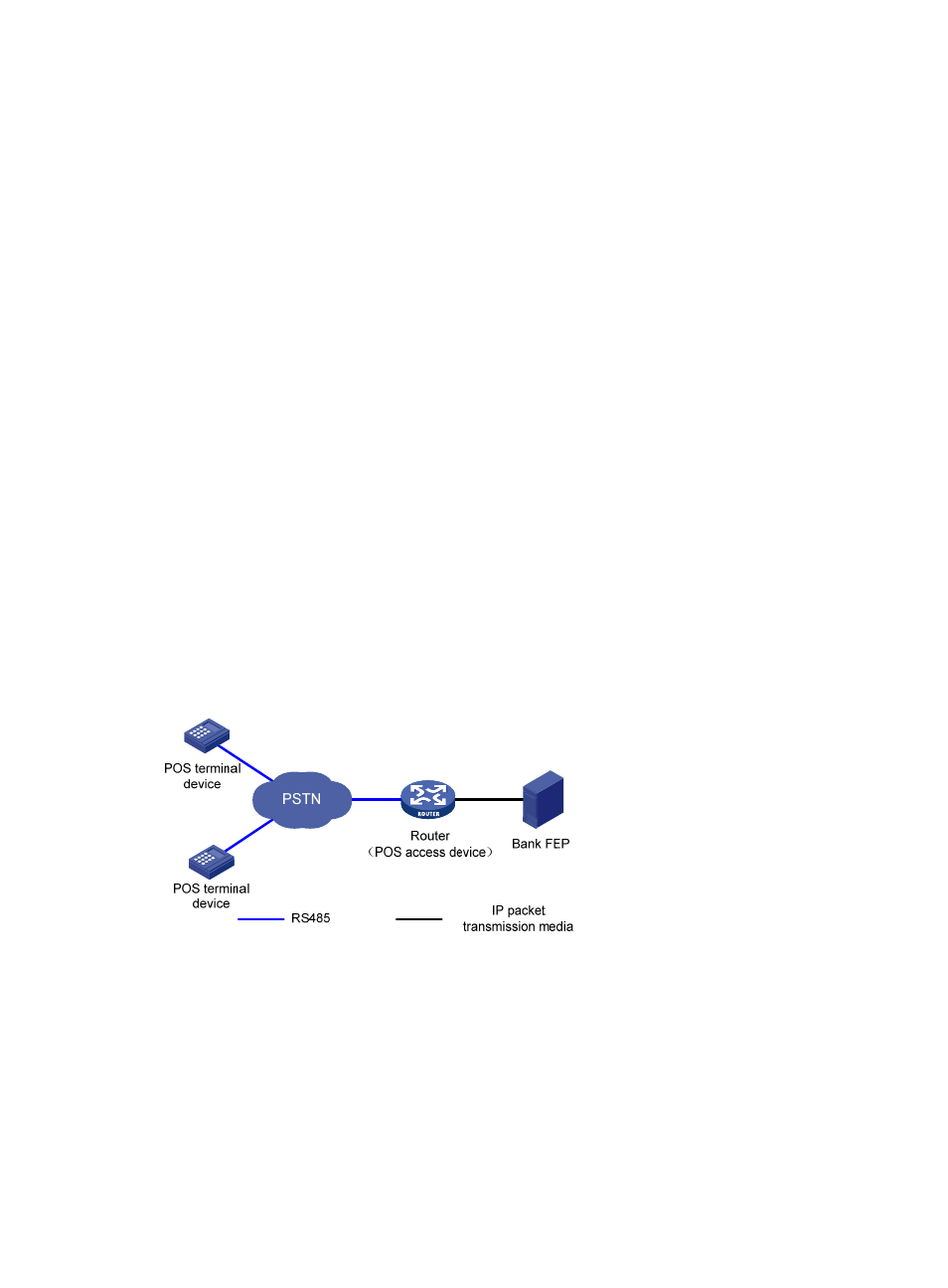Pos terminal access modes, Pos dial-up access, Pos flow access – H3C Technologies H3C MSR 5600 User Manual
Page 9

2
•
For a POS terminal template using TCP access mode, a TCP connection is referred to as an instance
for the terminal template, and a terminal template can have multiple instances.
•
For a POS terminal using dial-up or flow access mode, a physical link is referred to as an instance
for the terminal template, and each terminal template can have only one instance.
•
For a POS application template using TCP connection mode, a TCP connection is referred to as an
instance for the application template, and an application template can have multiple instances.
•
For a POS application using flow connection mode, a physical link is referred to as an instance for
the application template, and each application template can have only one instance.
For information about POS access modes and POS connection modes, see "
"
POS application template connection modes
POS terminal access modes
A POS terminal can be connected to the POS access device through dial-up access, flow access, or TCP
access.
POS dial-up access
The POS dial-up access procedure uses the following process:
1.
A POS terminal detects a card operation.
2.
The POS terminal synchronously or asynchronously dials up with the built-in modem to establish a
connection to an AM interface on the router (the POS access device).
3.
The router establishes a connection to the bank FEP directly or over a WAN.
The FEP is a remote Unix/Linux server that receives packets and sends replies to the POS terminal.
4.
The POS terminal accesses the bank card accounting system over the connection.
Figure 1 Network diagram
POS flow access
In POS flow access mode, the router providing POS access service is located at the commercial client
side and helps all POS terminals to access the router.
shows a typical network diagram for the
POS flow access mode.
The POS flow access mode has the following advantages:
•
Over 10 km (6.21 mi) connection distance (with long-line drivers).
•
Fast connection rate from POS terminals to the transaction center.
•
Fewer occupied communication links and reduced communication costs.
